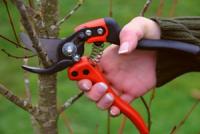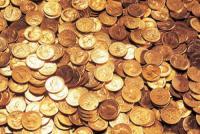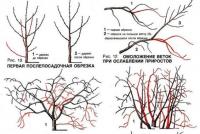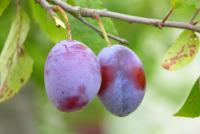How to plant trees in the plot. Compatibility of trees with each other and with other plants
Bad or vice versa?
In order for this not to happen, you first need to find out which neighbor is “friendly” with a certain fruit tree. There is such a thing - allelopathy. This is the science that studies compatibility cultures. All plants influence each other, changing the habitat, by separating into it the products of their vital activity.
An excellent neighbor for an apple tree is pine and cedar.
Pear
Pear can not be planted with the same trees as an apple tree. But apart from these trees one cannot allow the neighborhood of beech, barberry,.
The most harmful neighbor is the Cossack juniper, on which it develops.
Pleasant neighbors for it will be oak, nevezhinskaya mountain ash, black poplar.
Cherry 
This tree can not get along with apricot, black currant, raspberry, apple. But the cherry is perfectly "friendly" with plum or cherry.
It is impossible to plant tomatoes, peppers, and other solanaceous plants under cherries, as they are distributors. verticillary wilt (dies the core and the whole inside the plant). Trees affected by this disease, in most cases, die.
Barberry
This plant is not afraid of any neighbors. He is able to suppress the development of any tree or shrub. Therefore, it is recommended to plant it away from fruit plantations. Its only enemy is juniper, all because of the same.
Plum 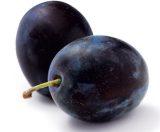
You can not plant near the plums raspberries, black, apple, pear.
But the maple, and especially the black elderberry, which helps to save the cherries from aphids, will become good neighbors.
Cherries
Cherry has a strong surface, which often depresses its "neighbors". Therefore, it is not recommended to plant near the apple, pear, ash, black currant. It grows well with rowan rowan.
Apricot 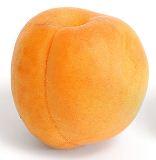
Apricot is a southern plant, so this tree is not very fond of our plants. It can not be planted near the apple, pear, plum, peach, cherry, red ash, cherry and walnut (all kinds). Does not like this tree and planting currant bushes under it or raspberries, which are home to many pests.
This tree does not tolerate in the neighborhood planting apples and pears. And from the cherry and sweet cherry the peach will start to evade, and that its side which adjoins to these trees, will begin to become bare. This will weaken the tree. And bare branches will begin to dry out, which will lead to. Winter can not survive such a peach.
Sweet cherry and walnut, lovers of loneliness will also lead to the oppression of peach growth and its death.
General tips for everyone fruit trees:
Do not plant trees on the site of the old garden. In extreme cases, change the ground. In the old soil there may be diseases or pests that are not so terrible to adult trees as or. And the amount of nutrients in this soil is minimal. It is better to plant in place the uprooted trees, which will enrich it with minerals and trace elements.
Group cultures: each individual species is better planted separately. So, cherries should grow with cherries, apples with apples, etc. You can also group together, such as stone fruits, etc.
Do not plant trees near powerful old trees. Their root system and very developed, so they will oppress their neighbors.
It is better not to plant shrubs under the trees. Pests that did not die during the treatment of trees with chemicals, but simply fell from a tree, will winter well under bushes and will appear on next year.
Do not plant in the gardens of vegetable and berry plants. They can cause the spread of many diseases. And crops such as potatoes, etc., take a large number of useful elements from the soil, making the soil poor and dry.
Try not to plant ornamental crops with fruit trees, which are “helpers” in the spread of diseases and pests.
Garden trees and shrubs in our country houses have their own unique features and their own individual character, and not all of them can become neighbors for other plants.
It has long been known to gardeners, despite the fact that walnut heals the atmosphere around him, scares off harmful insects and flies, it is bad for a number of growing crops.
Hazel oppresses its neighbors. But lilac, roses, viburnum, chubushnik (jasmine), barberry, horse chestnut and fir in general can not be planted next to pears and apple trees, because these fruit trees will suffer.
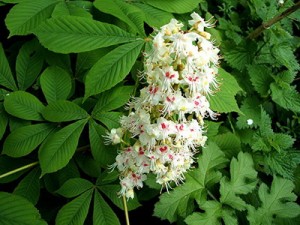


For an apple tree, a pleasant neighborhood will be next to raspberries, cherries, cherries and plums. By the way, the apple tree grows remarkably next to other apple trees. But she doesn’t like the place where her direct relatives were uprooting before this - the young apple tree does not want to grow in the place of the old one. If you still need to plant a new apple tree in place with a container, retreat 1.5 - 2 m from this place. Apple trees and pears can be planted near the place where the plum, cherry or sweet cherry had previously grown.
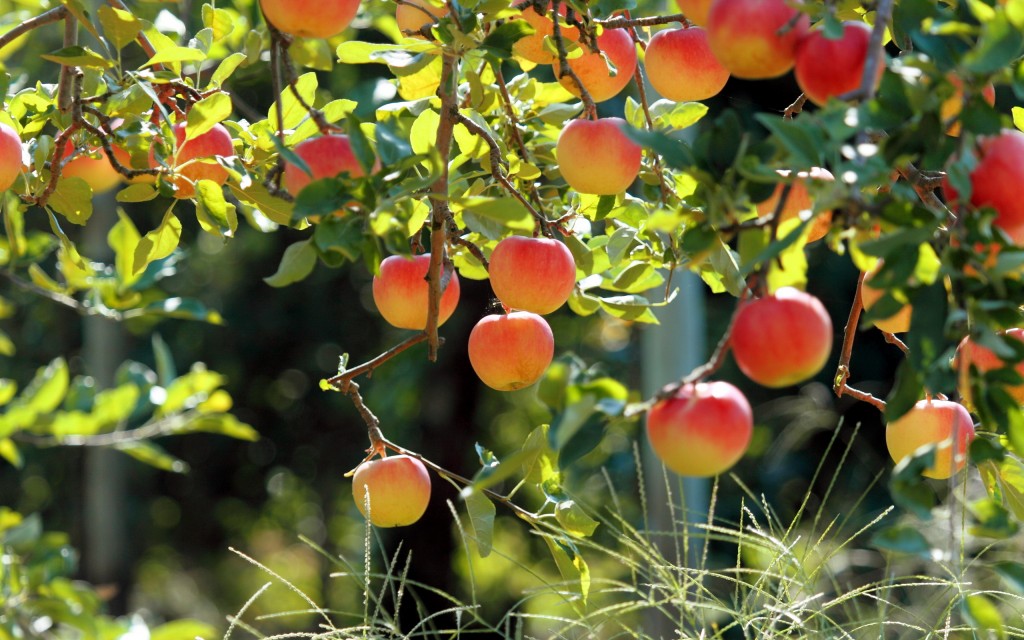
Cherries, in turn, prefer to grow next to cherries, cherries, apples, grapes.

Plum is difficult to get along with a pear, but it tolerates the neighborhood with the black currant, in contrast to the cherry, which does not tolerate the black currant in the neighborhood.
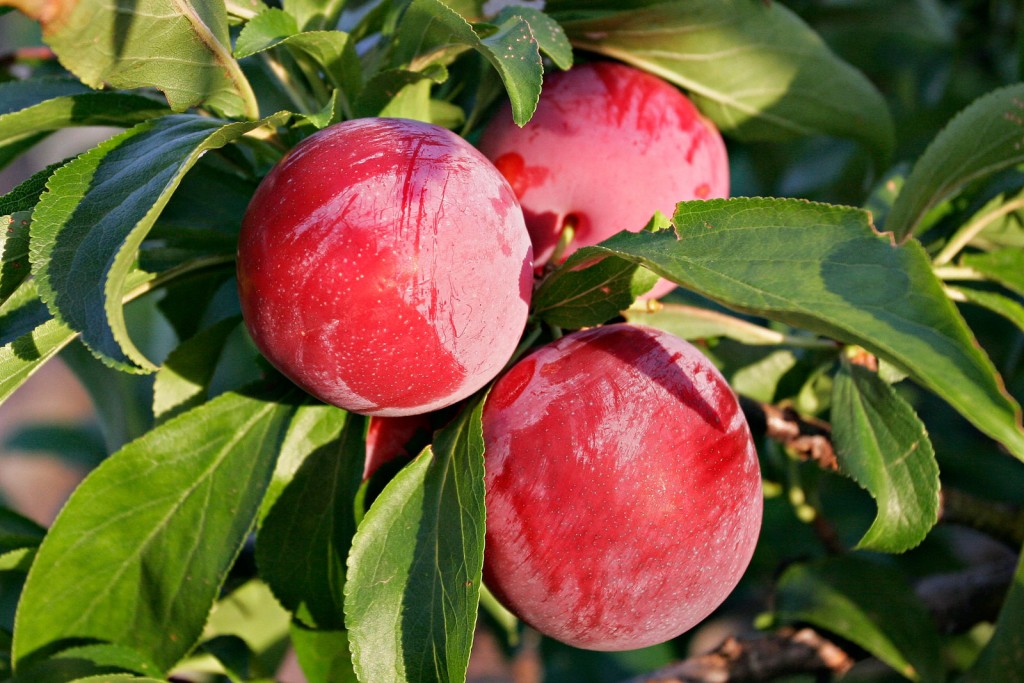
Many plants feel bad near the birch. The thing is that birch has a powerful surface root system, it pulls a lot of water over it. Growing next to her plants, deprived of moisture, then get sick and dry.
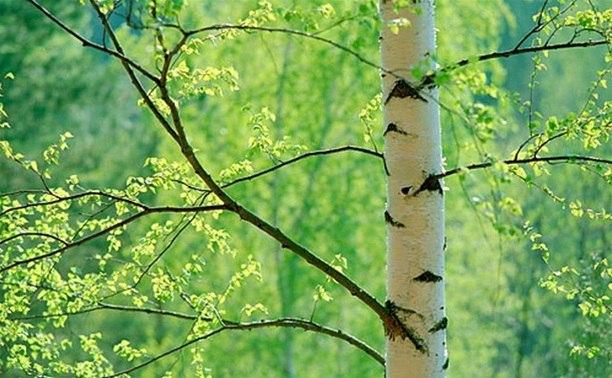
The same strong surface roots of maple and spruce, so their neighbors are also difficult. But if you like these trees and they should remain an ornament of your site, it does not matter. Under them, some shade-tolerant and unpretentious plants. It can be both cereals and flowers: small periwinkle, hosts, astilbe, ferns, anemone.

If you planted cereals on your land, then you should know that lavender and gypsophila can get along with them. But roses are selfish, they feel best alone.
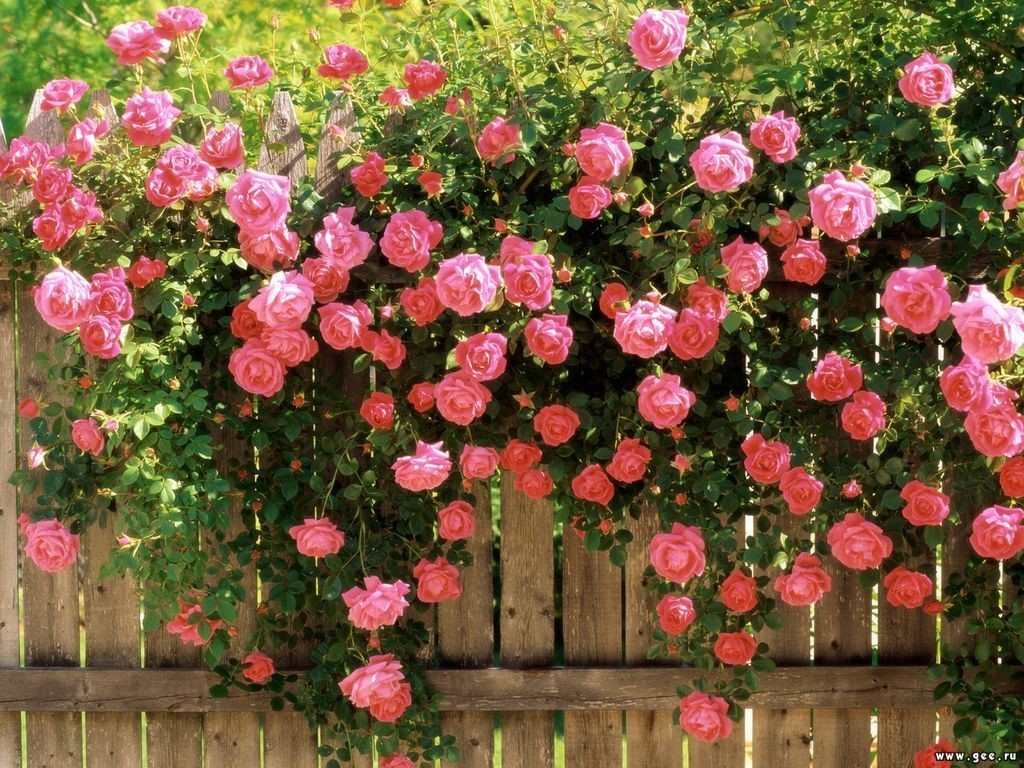
Apple trees and pears can get along well with birch and poplar trees. These fruit trees grow well near the oak, maple or linden, although if the latter grow in some distance.
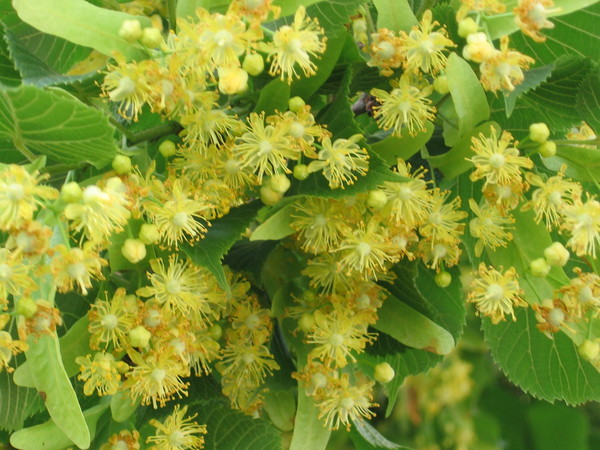
Keep in mind, coniferous trees, including spruce, strongly acidified the soil. So, in the neighborhood with them can become begonias, callas, rhododendrons, hydrangeas, heathers and ferns. These plants can grow well just in acidic soil. And honyniki create the necessary acidity at the place of their growth, and it will not need to be supported by special substances. The only thing is that it is not necessary to plant stone fruit and seed trees in the place of growing of coniferous crops, they do not tolerate acidic soils.
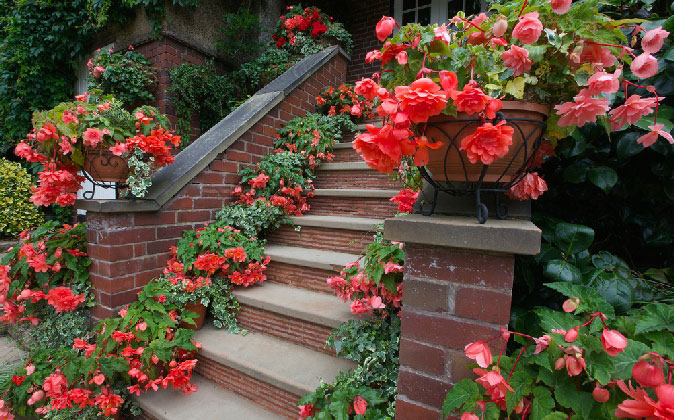
Gooseberry, apple, cherry, strawberry prefer medium acidic or close to neutral soil. To achieve this, you can add to the ground soil from coniferous forests or peat, if you can get it. Neutral soil is also loved by most of the garden and garden plants, as well as peonies, carnations, roses, lilacs, chrysanthemums, gulfs. Lilies prefer a weakly acidic soil, and carrots, onions, cabbage, tulips, snapdragons, sweet peas are slightly alkaline.
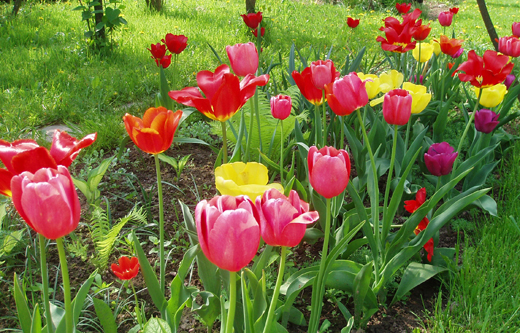
Fallen leaves and root excretions of some crops create an uncomfortable environment for other plants. For example, the same walnut, horse chestnut, some conifers, acacia, loch, oak, poplar, willow and elderberry prevent the others from developing by their secretions.
When selecting plants for the site, of course, it is necessary to take into account their other preferences. Especially for plants for flower beds.
Now, if the carnation, iris, cornflower, and eshsholtsia can do with a minimum of water, then roses, begonias, phloxes, and some other flowers - they will not last long without moisture.

Sunny places like almost all flowering plants. A lot of sun always prefer annual plants. But, for example, for daisies, astilbe, daffodils, crocuses, daylilies, pansies, and some others more suitable semi-shaded place.
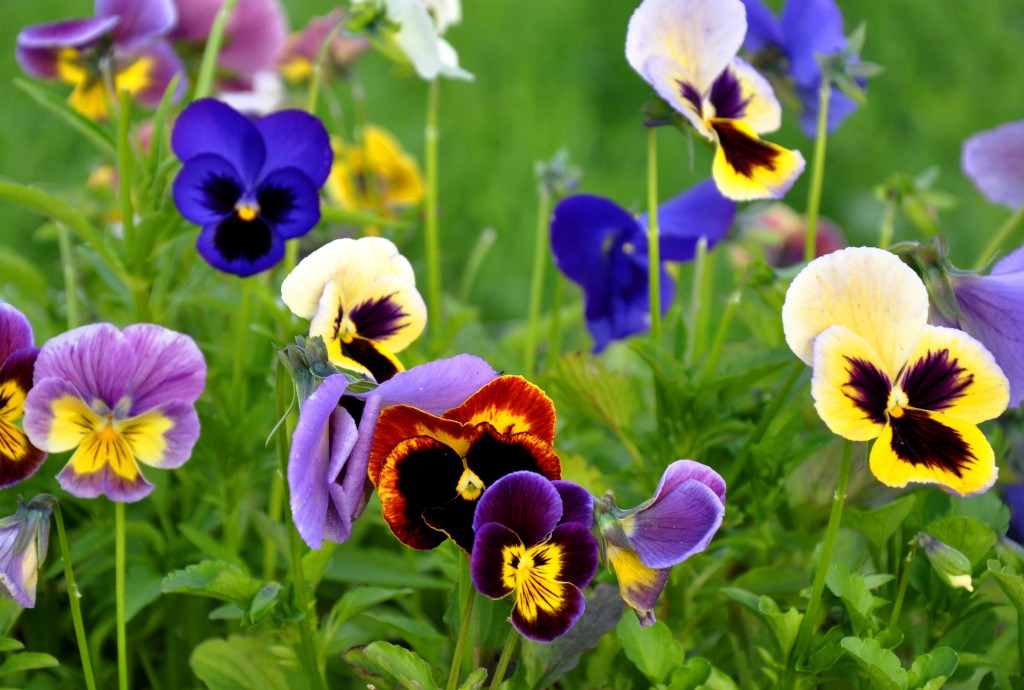
If you want your site, garden and flower beds to delight you, consider these rules of neighborhood plants.
The quality and quantity of the crop in the garden is directly dependent on the location of the trees, so before planting take into account many things. Especially in the case of a small area, because in a limited area I want to plant more crops without compromising their growth and development. The survival rate of the young stocking plants directly depends on the terrain conditions and the compatibility of trees and shrubs.
The importance of selection
Little is known about the influence of plants on each other, but all the information has been gathered thanks to many years of observation. As it turned out, in nature, some trees at close proximity can promote mutual growth and improve the quality of the crop. At the same time, other representatives - on the contrary, oppress the development of neighbors. For example, apple trees do not tolerate nearby cherry or plum; it is important to maintain a certain distance when they are planted.
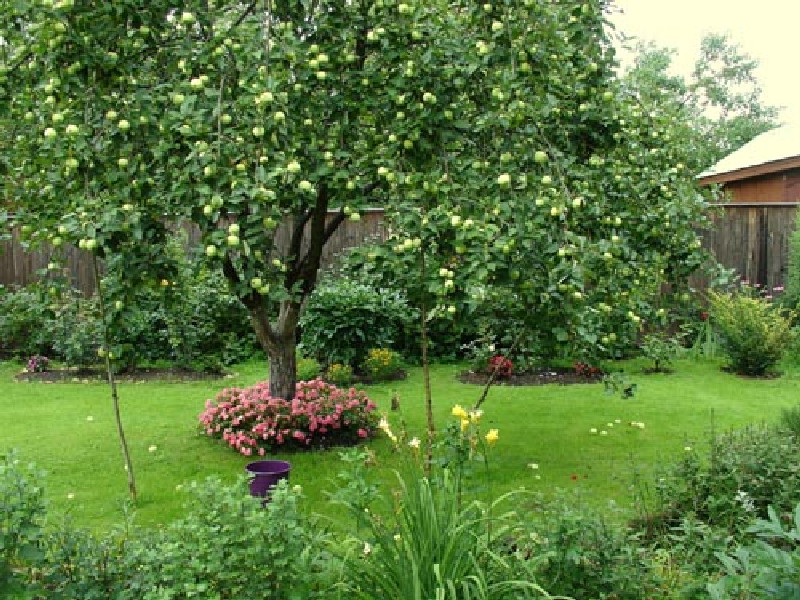
Mutual influence is based on the action of both the land and the underground parts of the plant. From the roots, leaves and inflorescences of fruit trees emanate their discharge, which can suppress or contribute to the development of a neighbor. Experts have noticed that plants of one year affect even the next year through the soil. In addition, differences in the growth of individual representatives can create unfavorable conditions, give an undesirable shadow - this is where the problems begin.
And on the suburban areas the importance of the compatibility point of fruit trees increases, because the proper distance between them is not always maintained. Often found crown plexus different treesthen the influence on each other increases. This is expressed in the suppression of a neighbor; a powerful representative even visually emphasizes his superiority. And with the right selection of copies, they independently provide protection against pests, take nutrients from different layers of soil.
Compatibility table
For convenience, experts have developed a special table of compatibility of trees, so it's easier to plan the site. There are several options in which there are different cultures, because gardeners are trying to plant the available territory as much as possible. Therefore, it is possible to look in advance at suitable combinations of plants and achieve good harvest afterwards.
One of the clearest examples is sweet cherry, which negatively affects many other trees and shrubs. She slaughters an apple tree, a plum tree, a cherry plum and a pear; at their close location, these specimens not only bear bad fruit, but also die with time. Also bad neighbors cherries are: gooseberry, white currant and red, raspberry. At the same time, such combinations as apple-pear, plum-apricot and cherry-dogwood, on the contrary, support and stimulate the development of each other. And if you plant a raspberry or blackberry under apricot or peach, you always get a rich harvest.
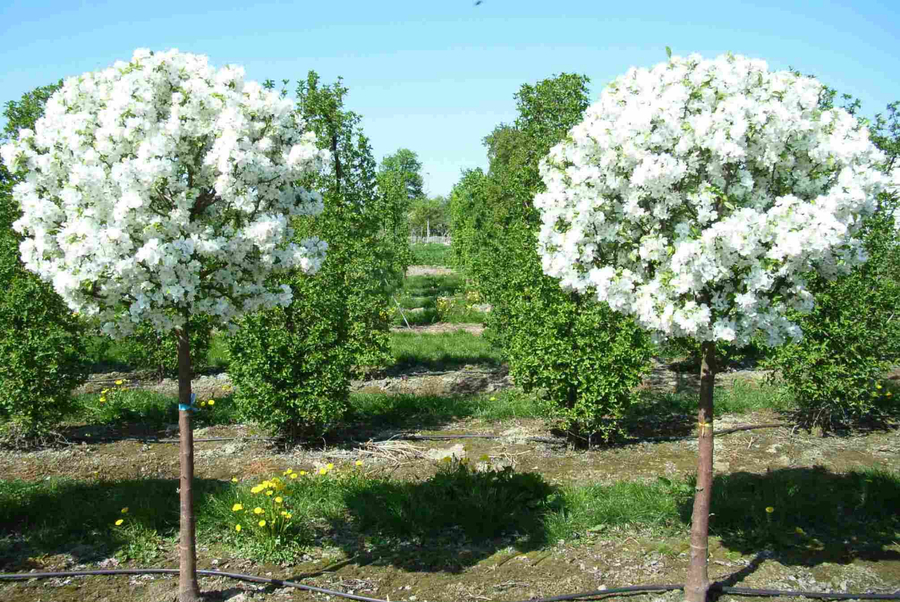
As for the gooseberry, it generally does not get along well with the stone and seed seeds. Also experienced gardeners know that walnut is too toxic for any neighbor, so it is always placed away from fruit crops. It is known that garden plants can also have a bad influence on trees, for example, potatoes with root secretions inhibit the growth of apple trees. The same result is expected from the root system of cucumber, tomato, alfalfa and wheatgrass. A strong effect of rose bushes on fruit trees has been noticed, therefore, as a rule, they are trying to be placed aside or near the fence.
Correct location
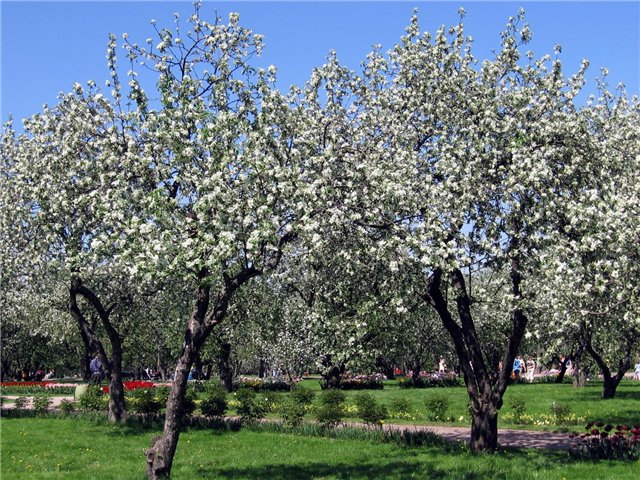
Because of the possibility of preserving the interaction next year, you need to carefully select the placement of crops during planting. Indeed, a certain amount of discharge from the root system remains in the soil, and diseases remain. It may also affect the lack of nutrients in the soil, so you need to competently approach the issue of location and compatibility of planting trees. In the case of fruit species, in order to ensure the best pollination, it is recommended to plant several varieties of one type of tree at once. The distance should be no more than 25 m, then the bees and bumblebees will carry pollen from one representative to another.
There is such a thing as a crop rotation - it is the alternation of planting different crops. Experts recommend not to have a new apple seedling in place of the uprooted specimen. The best location for fruit trees or berries is the soil after wild pears, maple, rowan, cereals and legumes. And after uprooted willow, alder or sedge, you should not plant other crops immediately, because they take a lot of useful substances out of the ground.

From the general indicators for the placement of fruit species should pay attention to:
- depth of groundwater;
- degree of shading.
With increased humidity, plants are often harmed. Therefore, if the depth of groundwater exceeds the permissible level, then you need to take care of the discharge of moisture. Lowland requires the arrangement of a catchment ditch or planting with moisture-loving crops. And stone rocks are recommended to be located on elevations. These are the basic principles of proper placement of fruit trees, adhering to which the gardener will receive a worthy reward in the form of healthy plants with a good harvest.
In addition, we offer a video about the tricks of the location of fruit crops on the site:
Planting of young stock begins with the preparation of pits. The exact location of the pits should be pre-calculated and demolished in a special landing scheme. When creating such a plan, it is necessary to take into account the minimum step between fruit-bearing plants and the compatibility of trees and shrubs in the garden. Only in this case, the garden tab is crowned with success.
For optimum fruitfulness and comfortable care, the minimum distance between trees should be equal to the sum of the heights of adult trees. Even if the compatibility of trees in the garden is at a high level (all plants get along perfectly with each other), it is not worth reducing the step between them. Too small a distance between young stock in the future will lead to undesirable results (lack of sunlight, crowns woven between themselves, etc.).
The success of planting depends on the selected places for seedlings. Therefore, it is advisable to draw up a scheme with professional gardeners. They will not only take into account the compatibility of trees when planting, but also carefully study the terrain (light, soil characteristics, water occurrence, etc.). Our experts will determine the best places for planting young, so that the future garden would bear fruit well and bring a huge quality crop.
Compatibility of fruit trees with each other
First of all, when planting it is important to estimate how the future fruit-grower will grow. Despite the good compatibility garden trees among themselves they will interfere with each other in the future due to the faster growth of one of them. Tall plants can simply block the access of sunlight to small trees.
Perfect compatibility of fruit trees is achieved by planting plants of the same species: apples with apples, cherries with cherries, etc. However, the same type of garden in the yard is unlikely to bring much joy and pleasure. Experienced Gardeners certain tendencies of development of various neighboring cultures were noticed (some get along with all 100, others try to survive the neighbor). Especially for you, we have compiled a tablet in which we noted how certain trees can live alongside other plants.
Tree compatibility, table for successful planting:
Tree compatibility video
Which fruit trees love the neighborhood with other trees and which ones? And what cultures “can't stand” each other?
Muhammad Samadovich Abdulakhatov, Nevyansk, Sverdlovsk region
Indeed, some trees love the neighborhood of their own kind, and some can not stand at all, someone is friends, and someone - no. Having planted a number of "enemies", you can wait for the harvest for years and so it does not wait.
There are several reasons for this phenomenon: the warring neighbors may have roots at the same depth, and they will interfere with each other; one plant releases into the soil harmful to another substance. Tell you about the neighborhood of the most common fruit crops.
Apple tree - The most popular tree in our gardeners. This is a very friendly plant that normally gets along with almost any crops (cherries, plums, other apple trees). However, you shouldn’t plant in her circle berry bushes Or break a vegetable garden, but you can place flowers, both annual and perennial, or aromatic plants.
And also interesting fact - If you plant conifers next to an apple tree, it will bear more fruit. But among them should not be a Cossack juniper, as it is a peddler of rust.
This disease is equally dangerous for apple trees. But what this culture can not stand - so this rowan. And the mountain ash mole is to blame, the caterpillars of which damage the fruits of the apple tree.
Pear not so supportive of their neighbors. Plum and a number of other fruit trees and shrubs get along with it badly, so that peace and tranquility reign on your site, place pear seedlings separately from other trees. Then there will be no compatibility issues.
Next to currants - also a very popular crop - it is useful to grow onions, it will protect shrubs from the kidney tick. But "work" only planting onions for the winter. Honeysuckle is a good neighbor for black currants, and gooseberry is an excellent companion for red currants.
But it would seem, relatives, black and red currants get along badly. And the neighborhood with raspberries does not suit them either. And once we started talking about raspberries, then this headstrong and freedom-loving lady does not tolerate any neighborhood at all. Rather, it is not tolerated by other cultures: powerful lashes and raspberry roots clog other plants, making it difficult to develop normally.
And: do not plant in the garden bird cherry, because glass cases may flock to it from all around, and they will gladly move to other, more valuable cultures. The treacherous hawthorn also lures apple pests to the site.
If your site is birch treethen it is better to take all the fruit plantings away from it, since the powerful root system of the plant will take away water and food from them - you simply will not get the proper harvest from the fruit.
If you grow peach on your plot, plant it separately from all other trees: it is a single plant that does not tolerate its neighbors. And he doesn’t like cherry and sweet cherry so much that the tree starts to lean in the opposite direction.

